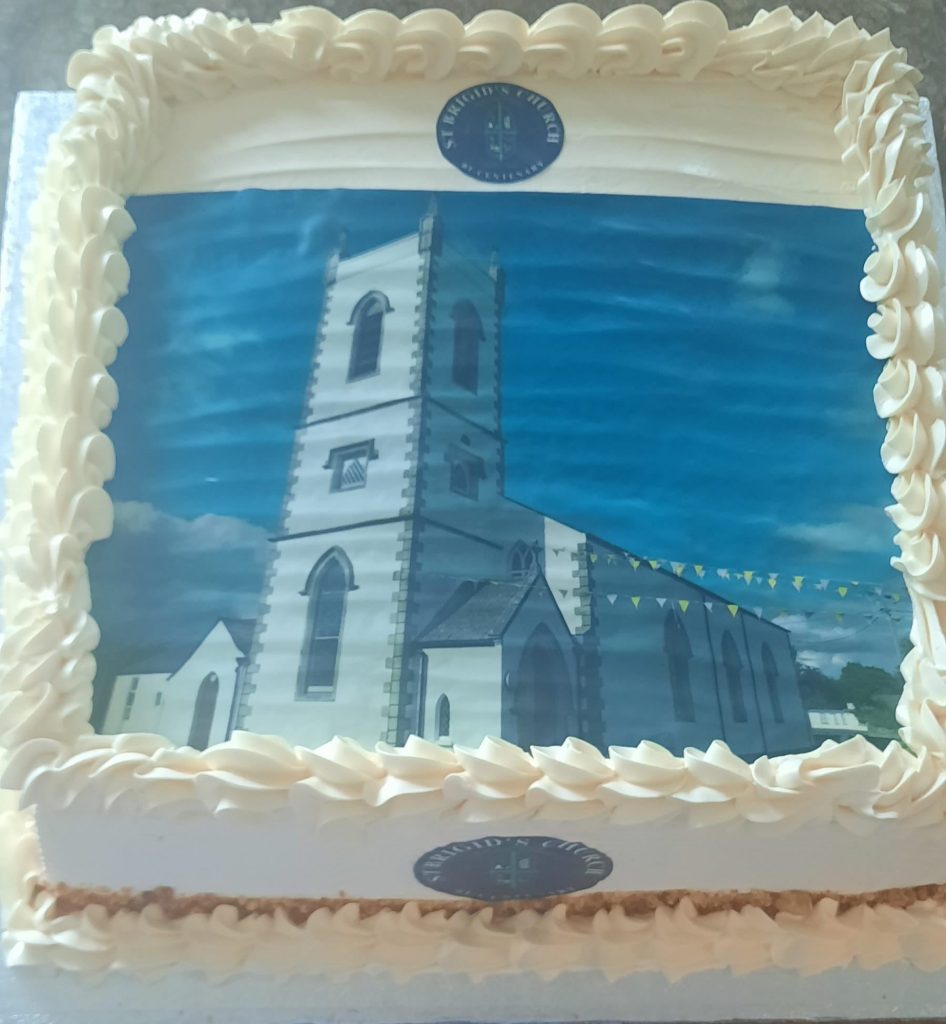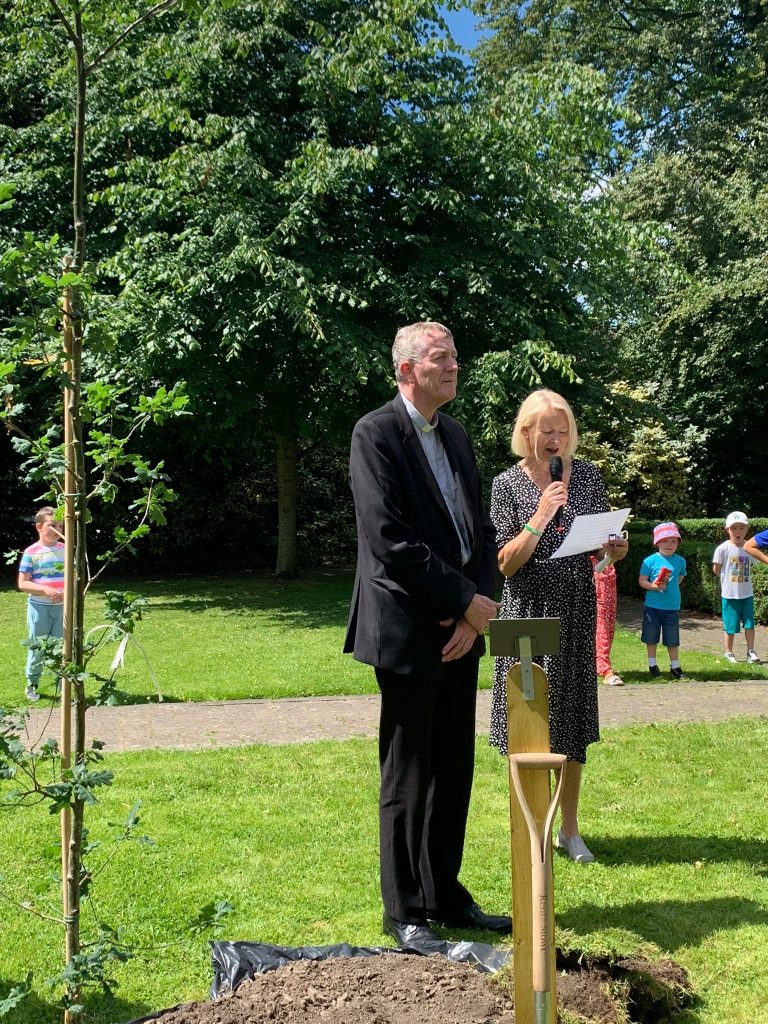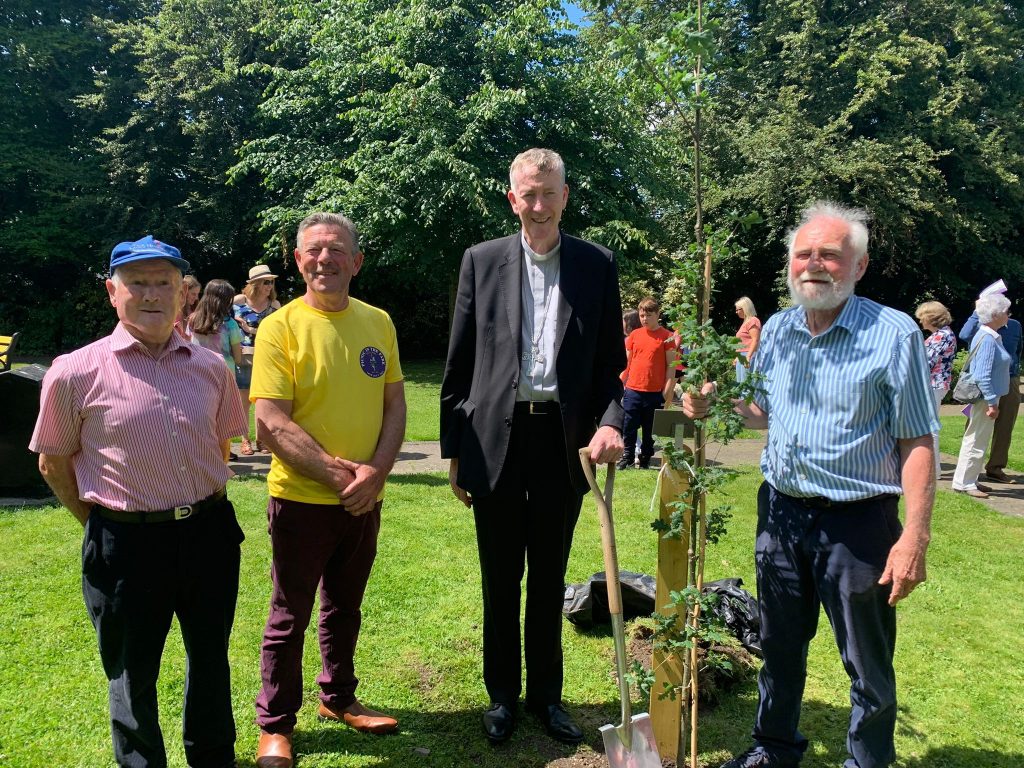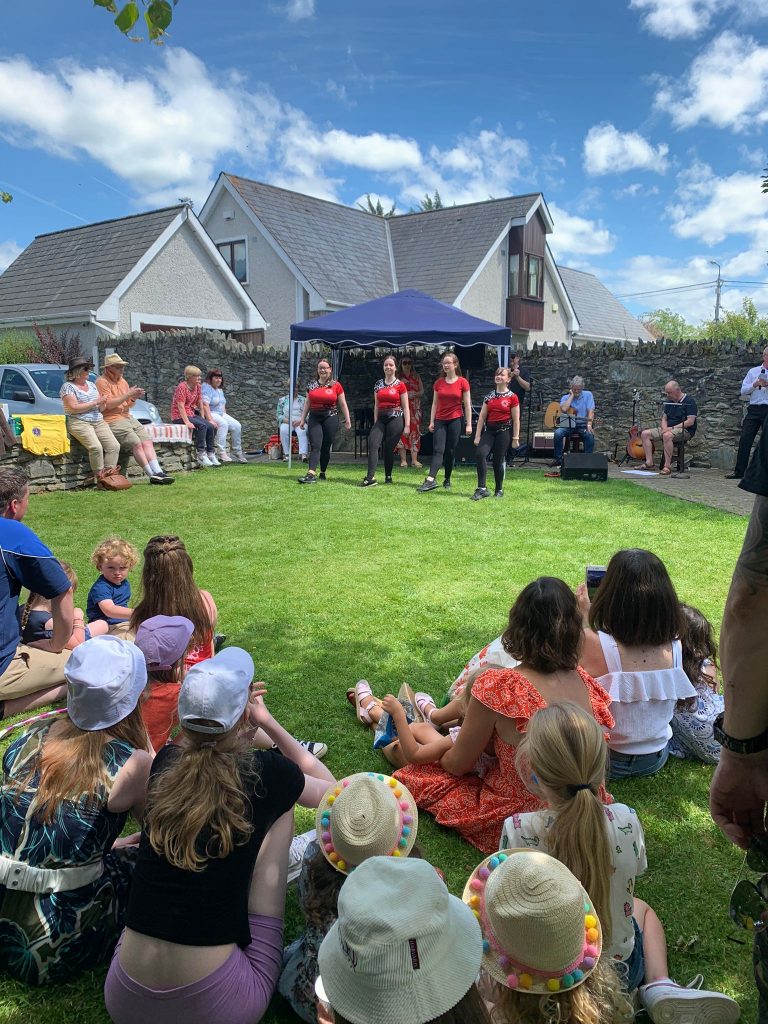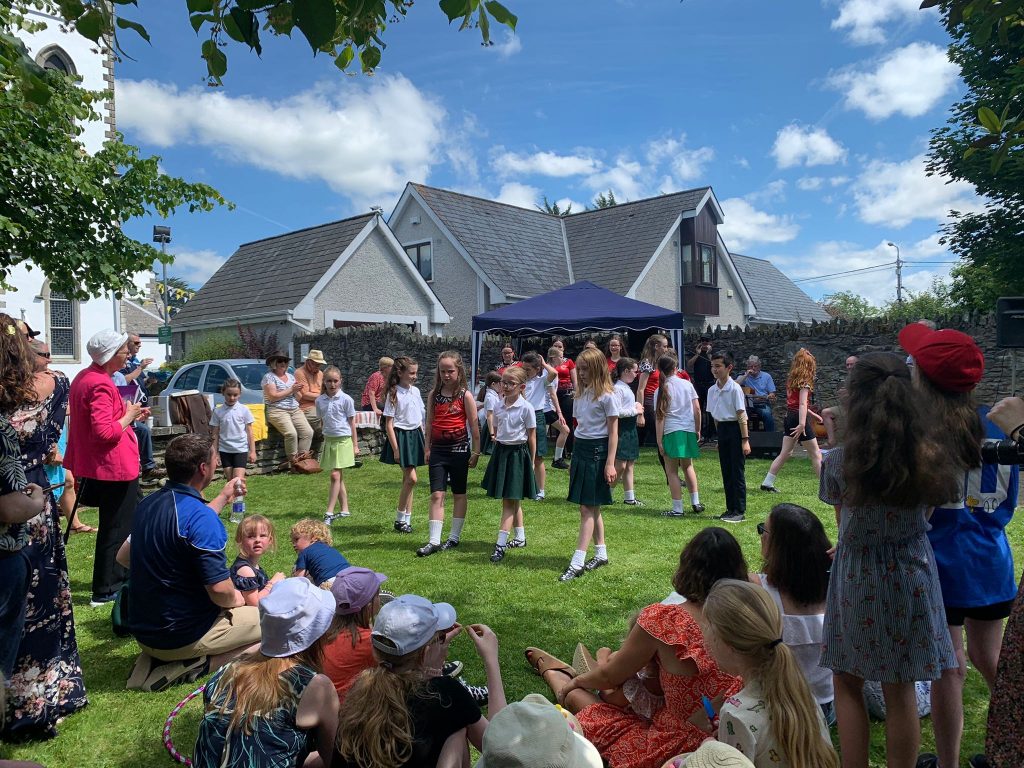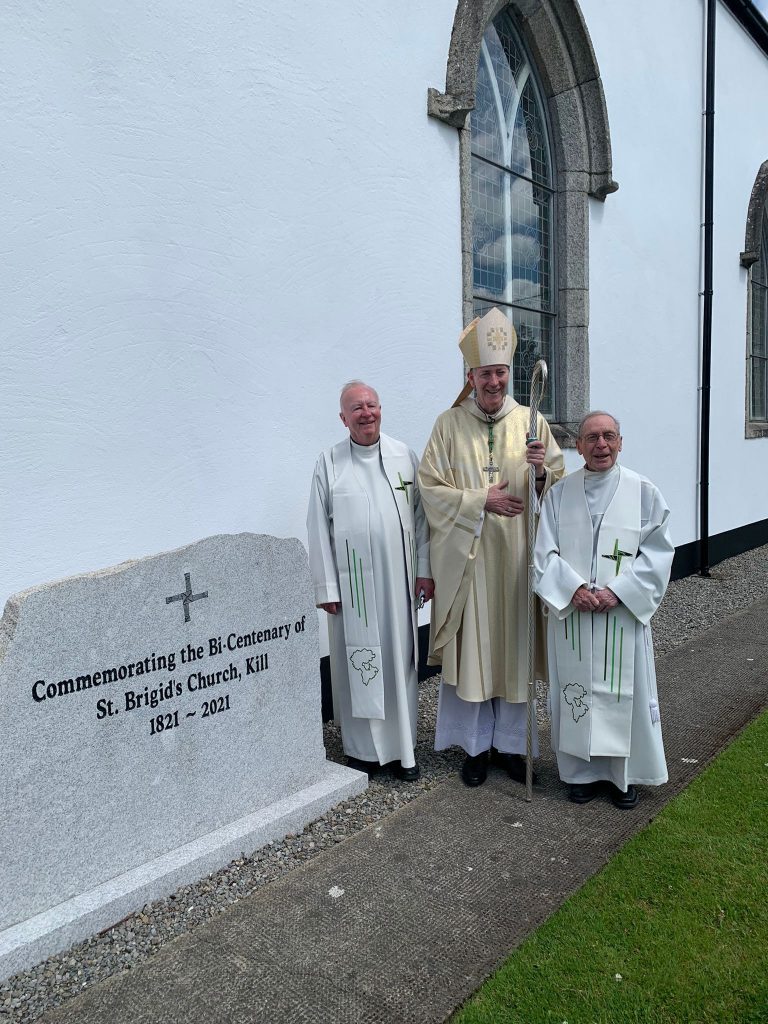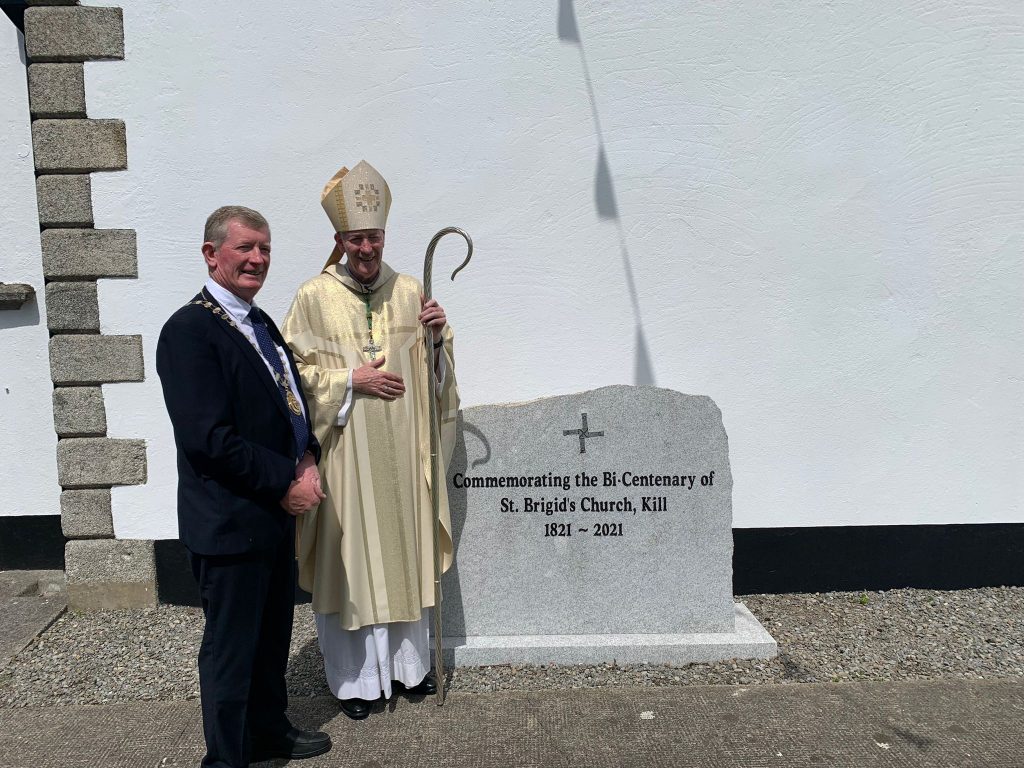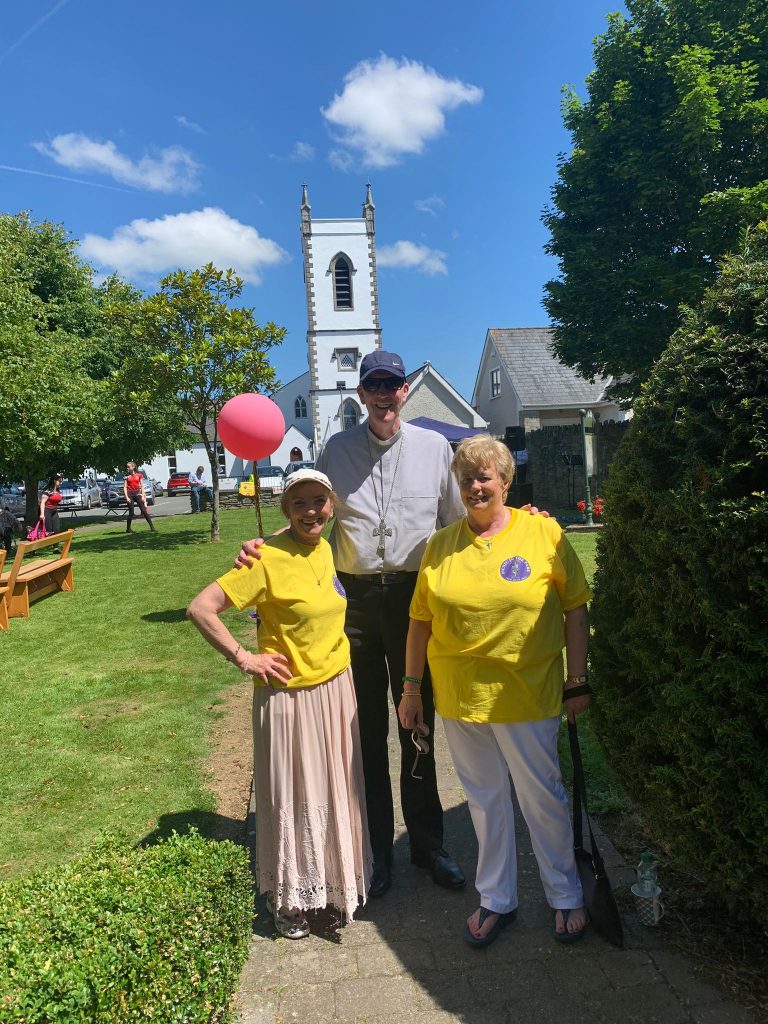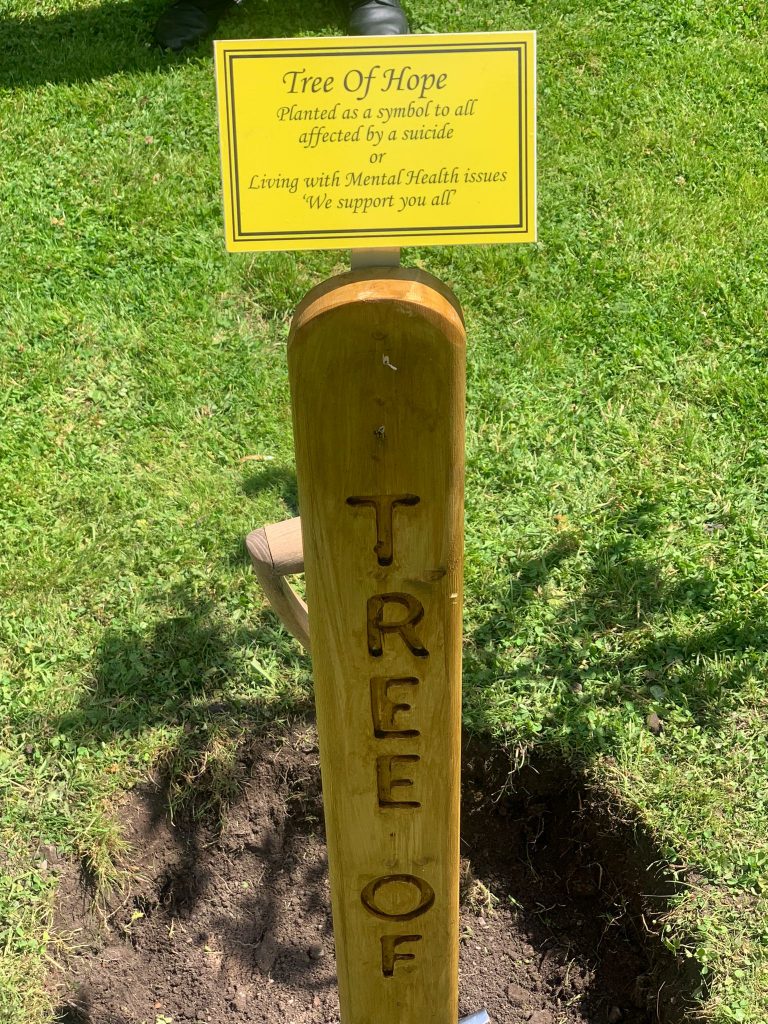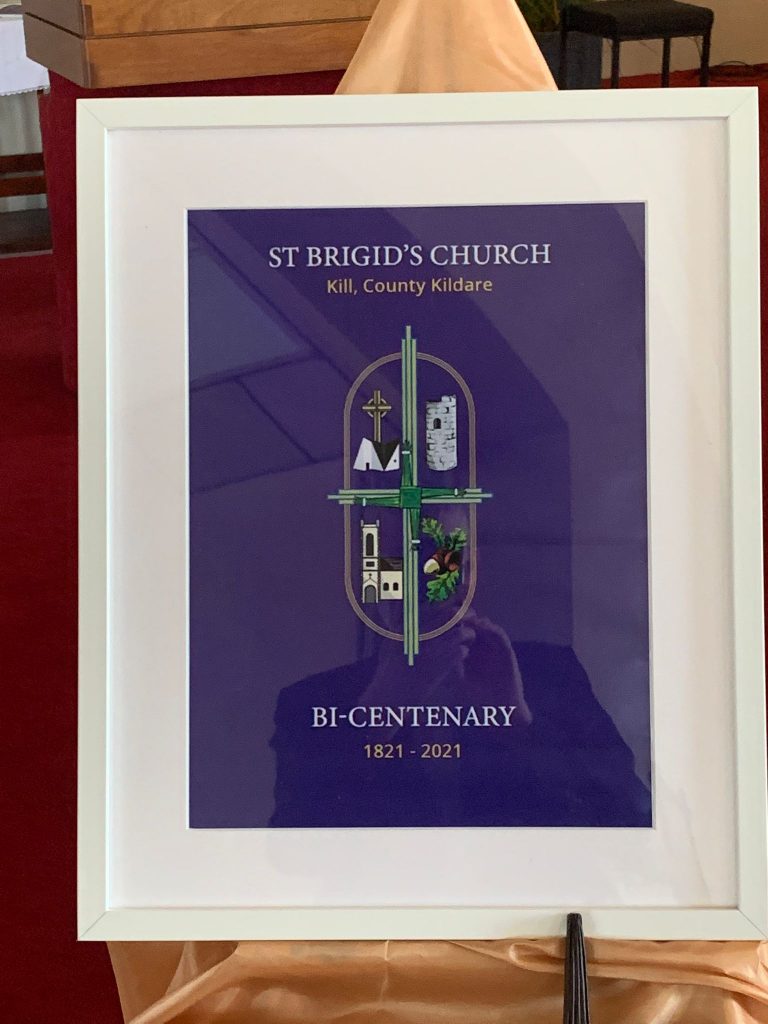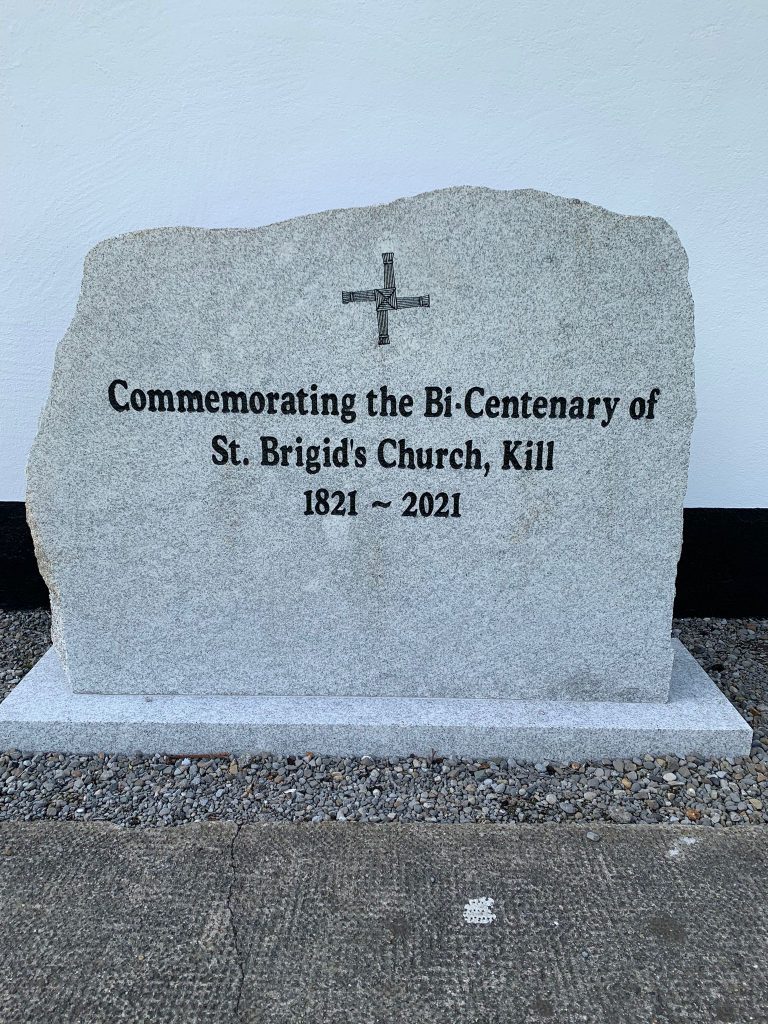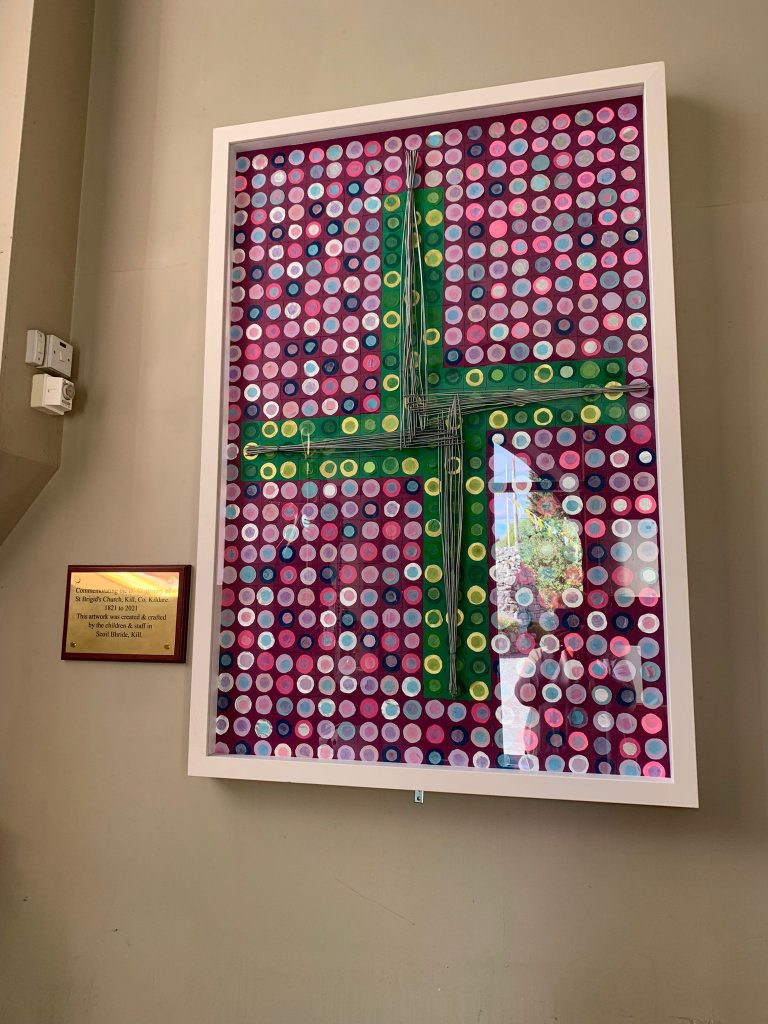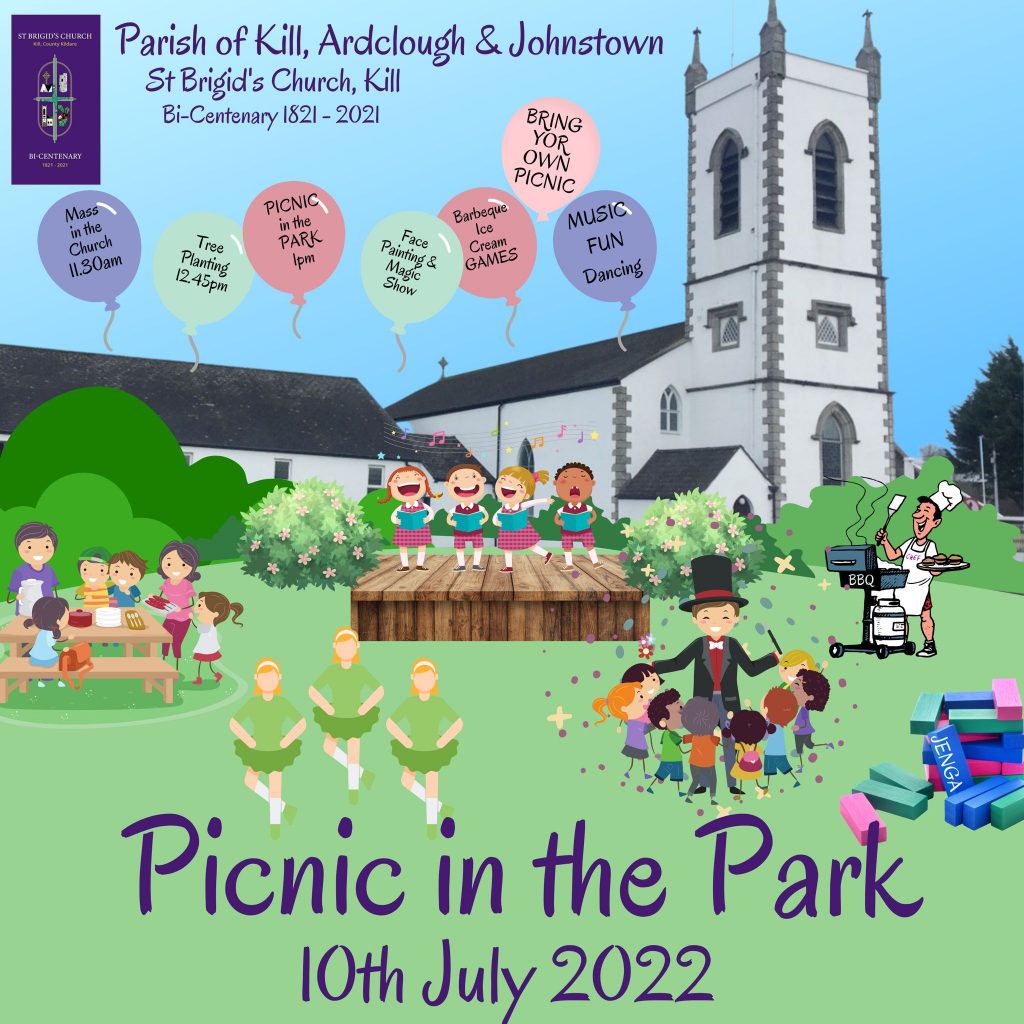St. Brigid’s Church, Kill – Bicentenary Mass 10.07.2022
Introduction:
Bicentenaries are landmark moments in our time and are always worth celebrating. I realise there have been a few attempts at celebrating the bicentenary of St. Brigid’s Church, Kill, but the global pandemic and consequential restrictions on public worship, made such a celebration impossible until this time.
It’s great to be here this Sunday, the Fifteenth in Ordinary Time. I always enjoy visiting Kill. I congratulate all involved with the planning of this celebration. Fr. Willie, Fr. Matt, the Parish Pastoral Council, Brian McCabe, Des Murtagh, Jean Roche, Valerie in the Parish Office and many more. The commemorative booklet is a template for any- bicentenary celebration and a rich resource for younger generations, so that they too might know the story of Kill, a story of faith that goes back to the earliest of times.
‘Cill’ literally means Church, so the Church was always central to the identity of this community and place. In the Middle Ages I understand there were little parish churches in Haynestown, Forenaughts, Johnstown, Kerdiffstown, Oughterard, Lyons, Clonaghlis, Castledillon and Whitechurch.
In Luke’s gospel for this bicentenary Mass we meet the man who was roughed up on the road from Jerusalem to Jericho. And much more importantly the response of those who came upon him. We know the text well, it’s called ‘the Good Samaritan’, a favourite text of Pope Francis. He uses it as a backdrop for his encyclical ‘Fratelli Tutti’ to tell all of us there is a better way.
We are changed by coming in contact with suffering. You see a church isn’t just bricks and mortar, stained glass and marble – it is more importantly ‘teach an phobail’ – the house of the people. A Church building points to something deeper, God’s presence, and the place where His people feel at home. For whatever unsettles us, for whatever makes us uneasy, for whatever leaves us uncomfortable here, let us pray for God’s love and mercy …
Homily:
I am very conscious that this is the fourth Church bicentenary celebration throughout the diocese in recent times. I think of St. Fintan’s Church in Ballinabranna, Carlow where the bicentenary was marked just before the pandemic lockdown. I think of Holy Cross Church in Killeshin, in Laois where its bicentenary was celebrated in May and I think of St. John the Baptist Church in Grange, Carlow where we marked its bicentenary three weeks ago.
And today we gather in St. Brigid’s Church, Kill. The bicentenary booklet for today suggests there is scant detail on the building of this church or the socio-economic conditions of the time. The precursor to this church apparently was situated in Hartwell, just off Hartwell Road. And while we don’t have extant parish records of the time relating to the building of St. Brigid’s Church in 1821, we can be certain that in the decade leading up to Catholic Emancipation in 1829, there were reasonable relations at a local level between Catholics and Protestants. Indeed the Earl of Mayo would have had to give his approval or at least acquiesce to the construction of this church.
We can be sure the situation here in Kill was no different to Killeshin in Laois or Grange in Carlow. Historian Shay Kinsella writing about Killeshin captures the scene the builders looked on as the church there was built: “had they raised their heads to survey the surrounding countryside, they would have seen little beyond the odd thatched cottage, poor mud tracks for roads and small fields of poorly-drained yet fertile land”[1]. Jimmy O’Toole in his publication ‘The Bicentenary of Grange Church 1822-2022’ writes vividly about the Grange area of 1819: “a majority of the people were described as ‘poor and mostly illiterate’. According to local newspapers of the period a quarter of the population were paupers, meaning they were living in the most terrible of conditions …”[2].
In many respects the people of the time that St. Brigid’s Church was being built in Kill, St. Fintan’s Church in Ballinabranna, Holy Cross Church in Killeshin and St. John the Baptist Church in Grange would have an abundance of sympathy for the one lying abandoned on the road from Jerusalem to Jericho in Luke’s gospel. Martin Luther King Jnr imagines the first question which the priest and Levite asked was “if I stop to help this man, what will happen to me?”, while the good Samaritan reversed the question: “If I do not stop to help this man, what will happen to him?” Our focus must be on the one lying on the ground, the one roughed up and left to die.
Pope Francis reminds us in ‘Fratelli Tutti’ we are all changed by coming into contact with suffering. The parable is a reminder that despite the individualism of today’s world, no one is an island, each of us are a piece of the human continent. Harvard Professor Robert Putnam shot to fame twenty years ago with the success of ‘Bowling Alone: The Collapse and Revival of American Community’ which articulately spoke about the increasing individualism of western society. While the recent global pandemic tweaked the dial ever so slightly on individualism, as for a time we all looked out for one another, there is that perennial danger of returning to a default individualism that would still leave that poor man abandoned on the road from Jerusalem to Jericho.
A church is much more than bricks and mortar. The bicentenary celebration must remind us of this. A Church with open doors that reaches out to accompany life, sustain hope, include those on the margins. This is the heart of a bicentenary event. Details may be scant of 1821; more importantly what will we leave behind us of the church here in Kill in 2022, 2032, 2042?
The recent synodal process as we draw the strands of the national synthesis together remind us the Church is no longer the centre of Irish life, no longer ‘the controlling force’ or ‘dominant voice’ it was seen by some to be, but it still can be a powerful influence for the good. The afternoon picnic in what promises to be the warmest day of the year is a critical part of this day. An outdoor picnic is about encountering neighbours and friends, maybe even some who might never darken the church door, but let’s sit with one another today, let’s linger in each other’s company in the hope that by our welcome all will feel truly part of ‘teach an phobail’ – the house of the people.
The parable of the Good Samaritan was the response Jesus gave to the question: “And who is my neighbour?”[3] Why was the Samaritan who came by the scene called good? He gave the assaulted man time. In ‘Fratelli Tutti’ Pope Frances reminds us “certainly he had his own plans for that day, his own needs, commitments and desires”[4]. We need to give everyone in our community time, so that through our encounter with them, they may grow to understand the deeper message that God wants everyone to enjoy, eternal life.
We are the 72 of last Sunday, the missionaries who are to go out in pairs and linger where we are most needed. Those who built the earliest places of worship in these parts had this idea and we should never lose it. This bicentenary, like others, is honoured by a superb booklet, splendid artwork by the wonderful children of Kill NS, a commemorative stone and the planting of an oak tree a little later. However the best way to honour a day like today is to be actively engaged in the life of this wonderful parish community. To be conscious of the other, particularly those who feel abandoned or forgotten. To be an articulate voice in the public square. It is better that as Church we are no longer the force we were seen by some to be, but let us be present by the roadside, at the foodbank, in the church, let us be that witness to Christ in a world that never needed it more.
[1] Kinsella, Shay: ‘St. Fintan’s Church, Ballinabranna, Co. Carlow – A Short History’, Mochua Print, February 2020, pg. 5
[2] O’Toole, Jimmy, ‘The Bicentenary of Grange Church 1822-2022’, Grange Bicentenary Committee, 2022, pg. 12.
[3] Lk.10:29
[4] Pope Francis, Fratelli Tutti, par 63, pg. 44, Vatican Press, 2020
